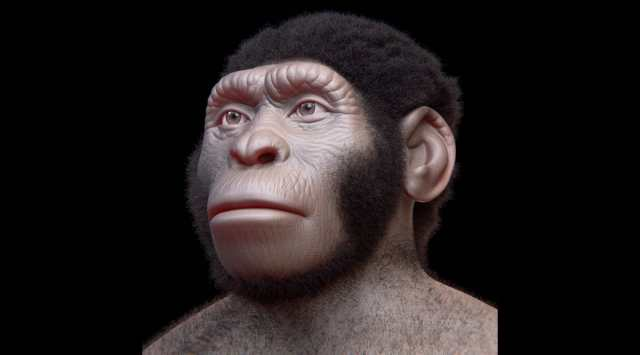Important Facts For Prelims
Claims of Burial and Rock Art by Homo Naledi
- 08 Jun 2023
- 4 min read
Why in News?
Recently, a study has been published, which suggests that Homo Naledi, an ancient human species, may have buried their dead and created meaningful symbols in a cave.
- However, these claims have sparked controversy within the scientific community.
What is Homo Naledi?
- Homo Naledi is a species of human discovered in the Rising Star cave system, a UNESCO World Heritage Site in South Africa in 2013.
- The remains of at least 15 individuals, including adults, juveniles, and infants, were found, making it the largest collection of a single hominin species in Africa.
- Homo naledi exhibits a combination of primitive and modern features and is not a direct ancestor of modern humans.
- These short-statured, small-brained ancient cousins are thought to have lived in Southern Africa between 335,000 and 241,000 years ago (possibly up to 2 million years ago).
What Are the Key Highlights of the Study?
- Burial Claims:
- Homo Naledi deliberately buried their dead, which would challenge existing notions about advanced mortuary behavior.
- Humans exhibit a unique behavior among primates by burying their dead, which sets them apart from other animals. This behavior is known as Mortuary behavior, characterized by social acts and a complex understanding of death.
- Previously, the earliest evidence of Mortuary behavior was found among Neanderthals and modern humans, occurring more than 100,000 years after Homo naledi.
- Homo Naledi deliberately buried their dead, which would challenge existing notions about advanced mortuary behavior.
- Rock Art Claims:
- Homo naledi may have created rock art in Rising Star Cave. This is intriguing because rock art has traditionally been associated with Homo sapiens and other large-brained ancestors.
- The report describes engravings in the form of deeply impressed cross-hatchings and geometric shapes such as squares, triangles, crosses and X’s.
- Additionally, a rock-like object found near a Homo naledi body suggests it could be a stone tool.
- Use of Fire:
- Homo naledi used fire strategically for illumination during mortuary and engraving activities in the cave.
What is the Controversy?
- There is no compelling evidence of deliberately excavated pits or anatomical alignment of skeletal remains.
- The spatial association of some skeletal elements does not confirm intentional burial, as it could be attributed to natural processes such as trampling or cave collapse.
- However, the absence of dating for the engravings raises doubts about their attribution to Homo naledi. Without firm dates obtained through associated residues, natural deposits, or archaeological layers, it is premature to ascribe the engravings to Homo naledi.
What is the Significance of the Study?
- While the discoveries at Rising Star Cave have the potential to reshape our understanding of early humans, it is crucial to subject these claims to rigorous scrutiny.
- The presented evidence for intentional burial, rock art, and the use of fire falls short of meeting the scientific community's standards. Excavation of the alleged burials, dating of the engravings, and comprehensive research on the use of fire are necessary to validate these claims and gain broader acceptance among scientists.








